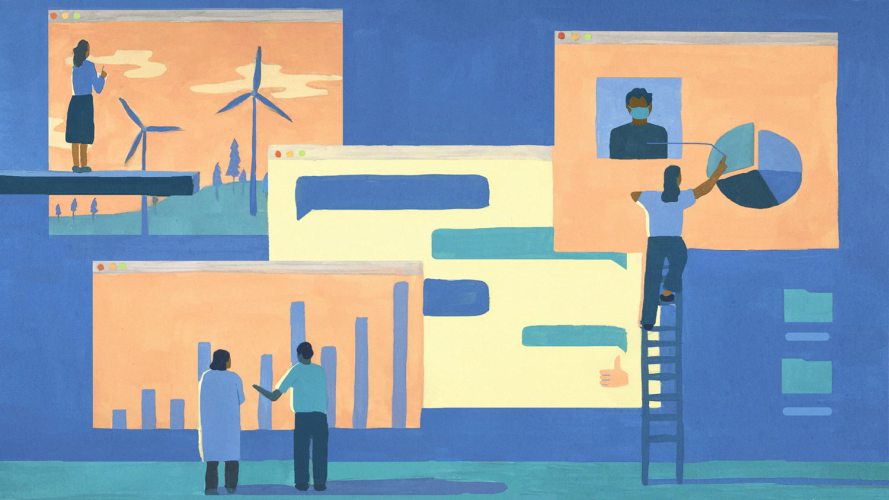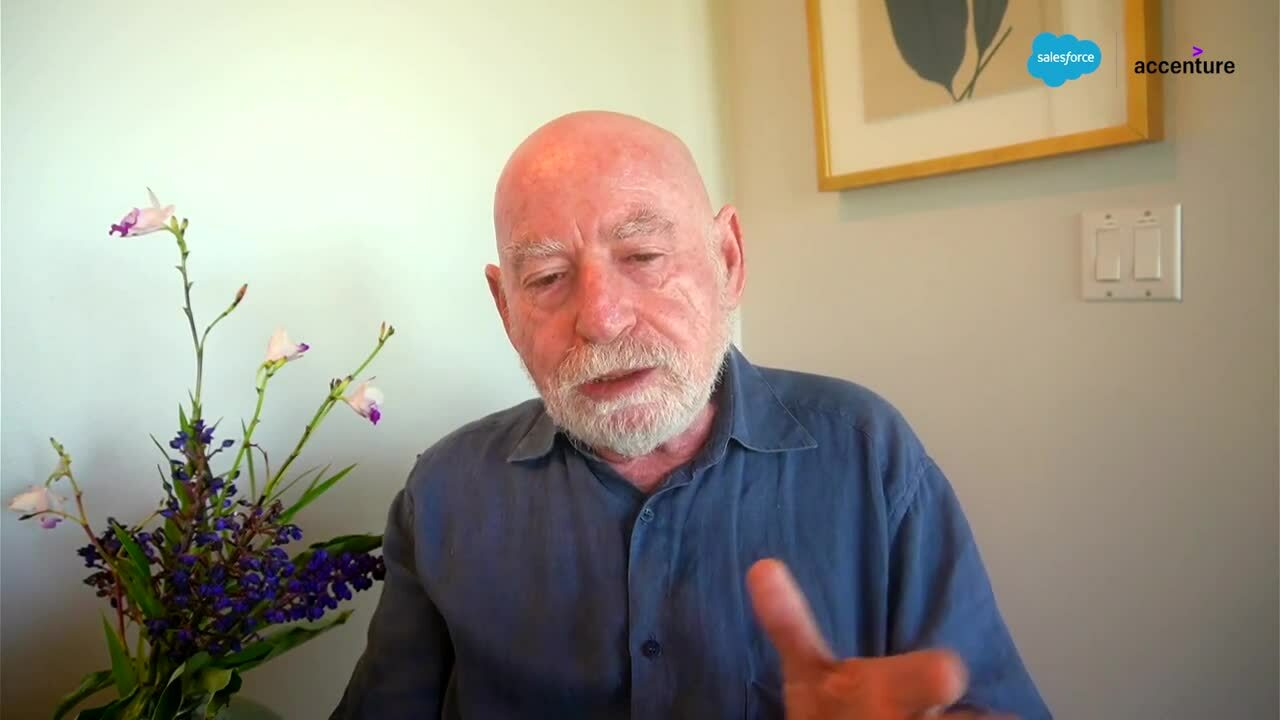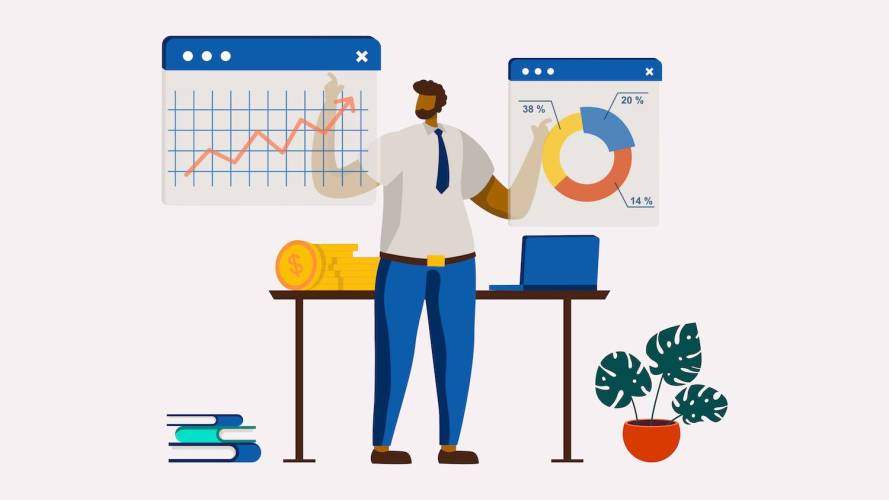How Business Leaders Can Move Forward With Certainty as Omicron Worries Mount



Salesforce’s scenario planners have developed six no-regret growth strategies to prepare corporations for growth despite an unpredictable future.

Noah Rimland Flower
Business leaders continue to face tremendous uncertainty. As the new Omicron variant has shown, the pandemic still has the capacity to surprise, even as positive developments with vaccines and treatments emerge. Border controls are tightening, energy prices are rising, supply chains are snarled, and inflation fears are taking hold.
These uncertainties could play out in many ways, which is why our team at Salesforce Futures partnered with Accenture Research to study scenarios for the coming five years, and their implications for business. While some growth strategies are a fit for one specific scenario, a smaller subset seems like to be effective across all scenarios. We call these “no-regret strategies.” After putting long-term strategy on the back burner since the pandemic began, now is the time for businesses to make bold new choices, and these strategies are a perfect starting point.
1. Help defeat COVID
There is a great deal we can do collectively to shorten the pandemic, save lives, and accelerate a return to growth. As our Chief Medical Officer Dr. Geeta Nayyar put it recently, every company is now a health company. Business leaders should of course continue to adjust safety protocols based on a close read of the science, and promote the latest facts on COVID-19 safety. That communication should reach not only employees but also all stakeholders including the community, partners, and suppliers. But the work shouldn’t stop there: this is the moment to join many other business leaders in pushing for a well-funded international effort to distribute vaccines, tests, and antivirals worldwide.
2. Lead the charge to Net Zero Now
There is no question that we will see escalating impacts from the climate crisis, and it is clear from COP26 that business is now leading the way to the goal of net-zero carbon emissions by 2050, which is our best shot at averting the worst outcomes. Aggressive decarbonization is very likely to become table stakes in every market, and the time to capture first-mover advantage is now.
If you lead the charge for Net Zero Now, as part of a holistic growth strategy, at minimum it will improve competitiveness, unlock new markets, and help you connect with increasingly climate-focused customers, talent, and partners. That means investing in both digital and science-based innovation, as well as implementing new systems that track outcomes against environmental and ethical commitments.
3. Elevate experience
In the last 18 months, expectations have skyrocketed for frictionless and intuitive customer experiences that anticipate our needs. As a result, there is now widespread awareness among customers that they are entrusting businesses with their privacy and security. This is especially true in the business-to-business (B2B) space, where expectations for experience are rising fastest. As a result, companies across sectors have left behind simple “digital translation” and embraced true digital transformation, a move that’s resulted in better experiences for everyone from sneakerheads to do-it-yourself crafters to enterprise software buyers. It’s essential for businesses across sectors to meet the new pandemic-altered standard and do it in a way that earns customer trust.
4. Reimagine work
Technology isn’t the only important component of elevating customer experience. Research shows one of the best ways to make customers happy is to make employees happy. That’s increasingly important thanks to the pitched battle for talent that the pandemic has brought to many sectors.
This is the time to rethink how to attract and retain scarce talent through redesigned roles, upskilling, and a dynamic internal marketplace that focuses on skills over credentials. It is the time to support the physical and psychological well-being of employees through dedicated programs and ongoing sensing mechanisms. And, it is the moment to get even better at creating a work-from-anywhere culture supported with a thorough digital-first reinvention of business processes. Businesses need to break down barriers to speed and agility, promoting a “fail-fast” mentality that rewards boldness over predictability.
5. Strengthen resilience
The worst part of the crisis is over in some regions, but our scenarios lead us to believe that major challenges remain likely as the new competitive landscape comes into focus. In the interim, we’re unlikely to see a snapback return to systemic stability, which means that investments in resilience are a smart hedge against risk. Enterprises need to protect against inflation, financial system stress, and other economic risks by strengthening their balance sheet, actively managing liquidity risks, and reducing leverage. Business leaders should also proactively adjust operating models to be ready for the full range of potential changes in wages and taxation. The work extends beyond internal operations. It’s also time to stress test customers, partners and ecosystems for their ability to withstand recession and supply chain disruption.
6. Design for change
A final strategy for resilience deserves separate mention because it marks a significant shift in thinking for most executive teams: bringing scenario planning into the heart of your conversations around growth strategies. Scenarios can help business leaders stress test existing strategies, find new options, and sensitize themselves to opportunities and risks by tracking and interpreting indicators of change. This can be accomplished efficiently as part of the regular course of business, and dramatically accelerates confident decision-making in times of crisis. With the shock of COVID, it’s the perfect time to create an outside-in approach to planning that draws on the input of partners, regulators, investors, and external experts. By prototyping a variety of alternative operating models, executive teams can position the enterprise for growth across a broad range of scenarios.
Make these six strategies your own by adapting them to the specific conditions of your market and the capabilities of your company. Combined with a keen awareness of the changing competitive landscape, they can become guiding lights as you pursue responsible and sustainable growth.
























